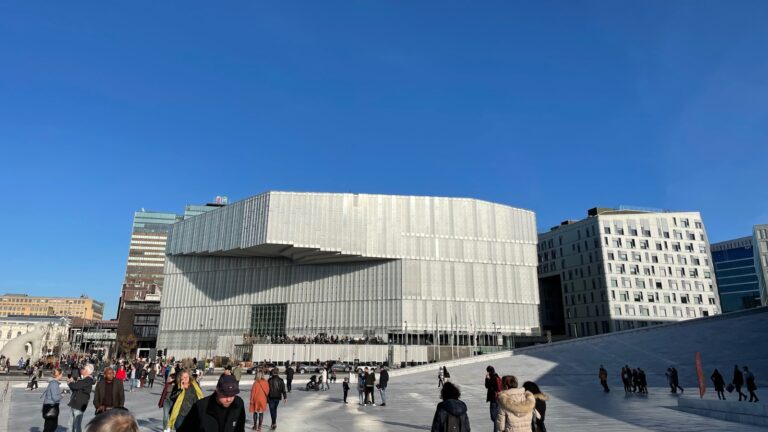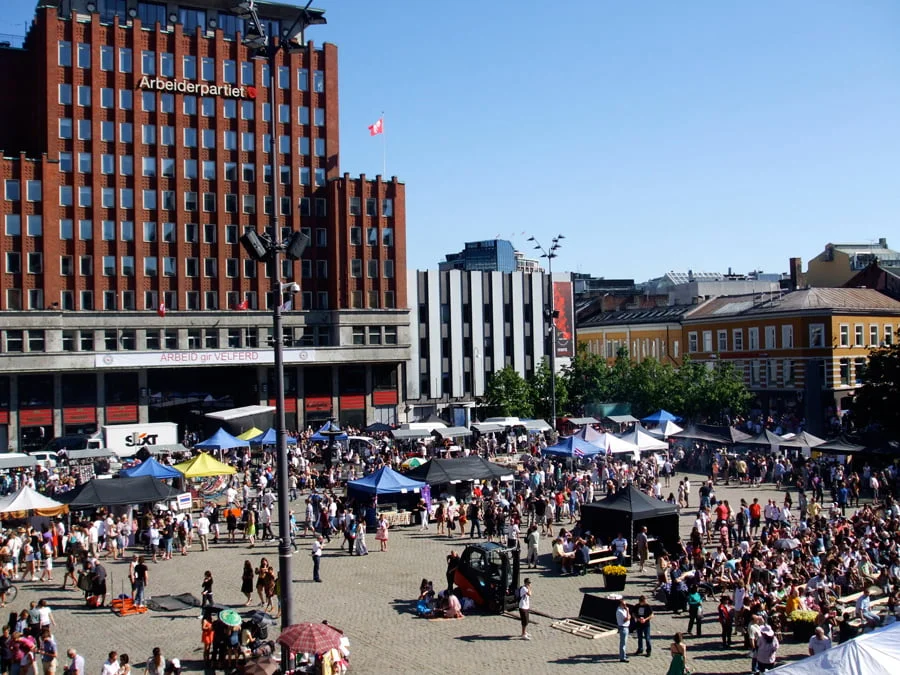Looking for a flexible place to work in Oslo? From creative hubs to polished office suites, the city offers coworking spaces to suit freelancers, startups, and remote professionals alike.
Starting out as a freelancer or entrepreneur in a new country can be incredibly daunting. I know this from hard experience over the last decade.

Starting a business is difficult enough in the best of conditions, but throw in a new language, different rules and regulations and an unfamiliar working culture, and things can get very tough, very fast.
Coworking Spaces Explained
Enter coworking spaces. When I first moved to Oslo in 2011 there was just one or two, now there are so many new ones popping up every year. They provide a space for entrepreneurs and freelancers to work, collaborate, and get the help they need.
A lot of people get in touch with me about starting a business in Norway and I recommend joining a coworking space to every single one of them.
While a full-time monthly membership can be pricey, most places offer a part-time or flexible membership that is great value if you don't want to be there all the time.
I often choose to work at Oslo's Deichman Library when I'm in the capital. But if you're starting a new business or working on a project, the access to a personal network and business advice often makes a coworking space worthwhile.
Note that I'm not including incubators and application-only programs such as Startup Lab. There's nothing wrong with those places at all, but this list is solely about easy-to-access space to get going as a freelancer or entrepreneur.
Mesh
Nationaltheatret & Youngstorget: When I first began working for myself in Norway, this was my home. But Mesh is now a very different beast!
It functions as a workspace, yes, but also very much the epicentre of Norway’s startup ecosystem. Housed in restored historic buildings, the two locations merge classic architecture with vibrant, creative interventions that spark curiosity and collaboration.
More than desks and Wi‑Fi, Mesh is built around community: with thousands of members in its wider network and 100,000+ annual visits, the energy stems from entrepreneurial serendipity.

Hosting everything from pitch nights to informal coffee jams, their dynamic events calendar turns any workday into a networking opportunity.
657
Fredensborgveien: Spread across two atmospheric buildings near Damstredet’s old wooden houses, 657 is one of Oslo’s largest creative communities. It's home to more than 200 people from startups to agencies and freelancers.
It cultivates a relaxed yet professional “big‑company feel without the employer” tag. Think table‑tennis, shared studio space, photo booth, maker space and consistent, friendly collisions that fuel unexpected partnerships.
With flexible drop‑ins available at daily rates through to full 24/7 access, it suits wandering freelancers as well as established creative teams needing room to grow.
Epicenter
Edvard Storms gate: Epicenter is deliberately constructed as a “Digital House of Innovation”—a hybrid hub where corporate innovation teams and digital scale‑ups share space, tools, and ambition.
Members tap into innovation labs, accelerator‑style growth programs, and practical “campfires”, which are intimate, curated deep‑dive sessions. The result: a member isn’t just renting space, they’re entering a think‑tank ecosystem designed to help move breakthroughs from idea to impact.
Epicentre Norway also has strong links with sister hubs in two other Nordic capitals, Helsinki and Stockholm.
Rebel
Universitetsgata: Rebel is less coworking, more ‘cowork experience'. Engineered by architects in a former 1960s office block, the building metamorphosed into a cross between a creative festival and a professional playground: complete with neon lighting, podcast studios, auditorium, restaurant, microbrewery and wine cellar, without losing practical work functionality.
It explicitly champions ongoing learning: hosting events, workshops, and a fully equipped digital studio aimed at freelancers and creators eager to elevate their craft, as well as teams who want offices with inspirational flair.
Factory Tøyen
Kjølberggata: Factory Tøyen transforms a century-old brick textile factory in Tøyen into an airy creative powerhouse with over 6,000 m² of workspace, private offices, event halls, lounges, cafés, and retail.
On the community front, Factory Tøyen operates like a cultural incubator. As Oslo Business Region notes, it's “a home for new ideas, curated experiences and creative work”.
Regular events—ranging from design pop-ups and food festivals to workshops and networking sessions—foster organic collision among startups, artists, and creative professionals. It’s that rare place where professional rigor and playful spontaneity coexist.
Spaces
Tollbugata 8a/b. The new kid on the block, Spaces is located in the Kvadraturen district of downtown Oslo.
Spaces is part of a global network of coworking spaces that originates in Amsterdam, so while it won't offer an instant network of Oslo-based professionals for a while, it will potentially help you build an international network.
Blank Space Oslo
Møllergata: Blank Space Oslo is a vibrant community space designed for artists, designers, and creative freelancers. What sets it apart is its fusion of workspace and cultural activity.
Blank Space doubles as a gallery, event venue, and workshop hub, hosting everything from drawing nights to screen printing sessions and professional art courses. Members benefit from a supportive and inclusive environment where creativity and collaboration are at the heart of daily life.
Kroloftet
Frysja: Originally the workshop of a production designer and furniture designer, Kroloftet has grown to become a community hub for those working at the intersection of art, design and technology.
Here, you can meet people working in design, architecture, ceramics, art, programming, electronics, furniture making, photography, illustration, music, migration research, project management, furniture upholstery, drumming, and more.
Other Options for Shared Office Space in Oslo
Not all coworking spaces are buzzing, creative hubs. Some act more like professional satellite offices for global brands, or remote teams who need a professional setting without the startup energy. Two international operators in Oslo cater precisely to this market.
Spaces
Kvadraturen, Calmeyers gate, Haakon VII gate, Nydalen, etc.: Spaces delivers a polished and consistent coworking experience across several high-profile Oslo locations. Each branch offers ready-to-use coworking areas, dedicated desks, and meeting rooms equipped with high-speed internet and modern, ergonomic furniture.
What makes Spaces stand out is its reliable service and professional atmosphere featuring clean environments, on-site IT support, staffed reception desks, and even rooftop terraces in some locations.
It's an ideal choice for those who want a seamless, turnkey workspace with the option for casual networking, without the pressure or pace of startup culture.
Regus
14 locations including Sentrum & Grefsen: Regus is a global plug-and-play office solution. With 14 locations across the city, it offers everything from hourly hot-desking to full private office suites, all without requiring long-term contracts.
Whether you need a desk for a few hours, a consistent place to work during a project, or a business address while you're on the move, Regus provides unmatched flexibility.
The locations are praised for their polished, corporate feel offering reception services, quiet work zones, and functional meeting rooms perfect for client-facing professionals.

